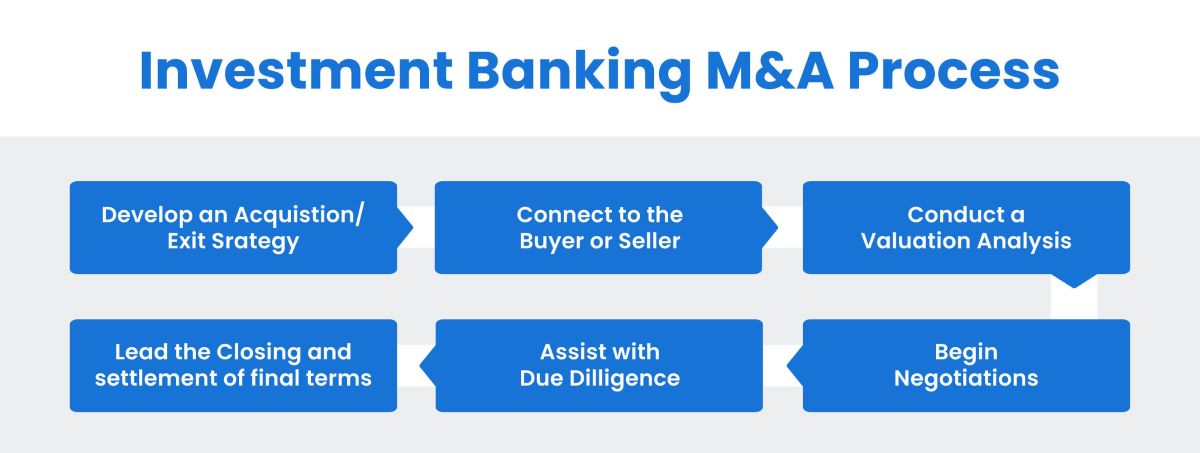

Finance
What Are War Bonds
Published: October 14, 2023
Learn how war bonds can help finance your future. Discover what war bonds are and how they can play a role in your financial strategy.
(Many of the links in this article redirect to a specific reviewed product. Your purchase of these products through affiliate links helps to generate commission for LiveWell, at no extra cost. Learn more)
Table of Contents
Introduction
War bonds, also known as defense bonds or victory bonds, are financial instruments issued by governments to raise funds for military operations and war efforts. These bonds, typically issued during times of conflict, allow individuals and organizations to invest in their country’s defense infrastructure.
The concept of war bonds dates back centuries, with examples of their use found as early as the American Revolutionary War and the Napoleonic Wars. In modern times, war bonds have been used by countries to finance major conflicts such as World War I, World War II, and more recent conflicts like the Iraq and Afghanistan wars.
War bonds serve multiple purposes, not only providing the necessary funding for military operations but also fostering a sense of patriotic duty and unity among the civilian population. By investing in war bonds, individuals can contribute directly to the national defense and show support for their country during times of crisis.
Throughout history, war bonds have played a vital role in financing wars and shaping the economies of nations. These bonds offer a unique investment opportunity, allowing individuals to support their country while potentially earning a return on their investment.
Definition of War Bonds
War bonds, also known as defense bonds or victory bonds, are financial instruments issued by governments to raise funds during times of war or military conflict. These bonds are essentially a form of debt that the government sells to individuals, corporations, and other entities in exchange for capital that can be used to finance military operations and related expenses.
War bonds are typically issued with a fixed maturity date, at which point the bondholder can redeem the bond for its face value along with any accrued interest. The bonds are generally sold in different denominations to cater to a wide range of investors, from small individual bondholders to large institutional investors.
One important characteristic of war bonds is that they are considered a safe investment, backed by the full faith and credit of the government. This gives investors confidence that their investment will be repaid, with interest, upon maturity. Governments use this assurance to encourage citizens to purchase war bonds, portraying it as both a patriotic duty and a way to support the war effort.
It’s worth noting that war bonds are not limited to a specific type of bond. Depending on the country and time period, war bonds can take various forms, such as traditional government bonds, savings bonds, treasury bonds, or even specialized bonds exclusively issued for war financing purposes.
Overall, the definition of war bonds can be summarized as government-issued debt instruments sold to individuals and entities during times of war to raise funds for military operations. By investing in war bonds, individuals contribute to their country’s defense efforts while potentially earning a return on their investment.
Purpose of War Bonds
The primary purpose of war bonds is to provide a stable and reliable source of funding for governments during times of war or military conflict. These bonds allow governments to raise the necessary capital to finance military operations, purchase essential equipment and supplies, and support the overall war effort.
One of the key reasons for issuing war bonds is to mobilize public support and participation in the war. By offering citizens and organizations the opportunity to invest in these bonds, governments aim to instill a sense of patriotism and unity, creating a shared responsibility for the defense of their country.
War bonds also serve as a means of controlling inflation and managing the national economy during times of war. By encouraging citizens to invest in war bonds, governments can channel excess savings into productive investments and prevent the money supply from spiraling out of control. This helps stabilize prices and prevent economic instability during wartime.
Furthermore, war bonds allow governments to reduce their reliance on foreign borrowing or monetary expansion, which can have negative consequences on the domestic economy. Instead, by relying on domestic savings through bond sales, governments can maintain better control over their financing and reduce the risk of excessive debt accumulation.
Another purpose of war bonds is to promote financial discipline and encourage savings among citizens. By investing in war bonds, individuals commit a portion of their income to a long-term investment, which can instill financial responsibility and create a personal stake in the nation’s economic well-being.
Lastly, war bonds offer an opportunity for individuals to earn a return on their investment. While the primary motivation for investing in war bonds is typically patriotic duty, the interest payments provided by these bonds can incentivize individuals to participate. The interest rates on war bonds are usually fixed, providing stable and predictable returns for the bondholders.
In summary, the purpose of war bonds is threefold: to raise funds for military operations, to foster a sense of patriotism and national unity, and to provide individuals with a secure investment opportunity while contributing to their country’s defense efforts.
How War Bonds are Issued
War bonds are typically issued through a well-organized government campaign that aims to generate public interest and encourage widespread participation. The process of issuing war bonds involves several key steps:
- Government Announcement: The government announces the launch of war bond campaigns, often accompanied by a patriotic message to rally public support. This announcement can be made through various channels, including press releases, public speeches, and advertisements.
- Bond Offering: The government establishes the terms and conditions of the war bonds, including the interest rate, maturity period, and the minimum denomination for purchase. These details are typically outlined in a prospectus that provides potential investors with all the necessary information about the bond offering.
- Sales Channels: Governments utilize multiple sales channels to make war bonds accessible to a wide range of investors. This includes banks, post offices, and designated bond-selling agents. Online platforms may also be used to streamline the purchase process and reach a broader audience.
- Promotional Campaigns: To encourage participation, governments launch extensive marketing and promotional campaigns. These campaigns often involve the use of posters, advertisements, radio broadcasts, and public events to create awareness and highlight the importance of investing in war bonds.
- Investor Outreach: Governments undertake efforts to reach out to potential investors directly. This may involve targeted communication to specific demographics, such as introductory sessions in schools or workplace seminars. The aim is to educate individuals about the benefits of investing in war bonds and address any concerns or questions they may have.
- Subscription Period: Governments designate a specific period during which individuals can subscribe to war bonds. This subscription period allows investors to make their investment decisions and submit their applications.
- Issuance and Distribution: Once the subscription period ends, the government collects the applications and processes them. Bonds are then issued to the successful applicants, either in physical or electronic form. The bonds can be held by the investors until they mature, or they can be traded in the secondary market if liquidity is available.
It is important to note that the specific process of issuing war bonds may vary depending on the country and time period. Some governments may introduce additional measures or tailor their campaigns to suit the prevailing economic and social conditions.
Overall, the issuance of war bonds involves a strategic and coordinated effort by the government to generate public participation and raise funds for the war effort in a systematic and organized manner.
Benefits of Investing in War Bonds
Investing in war bonds offers several benefits for individuals and organizations beyond the patriotic duty of supporting their country’s defense efforts. Here are some key advantages of investing in war bonds:
- Patriotic Contribution: Investing in war bonds allows individuals to actively contribute to their country’s defense efforts during times of war. It provides a tangible way to demonstrate patriotism and support for the nation.
- Stable and Secure Investment: War bonds are generally considered a safe investment since they are backed by the full faith and credit of the government. This makes them a low-risk option for investors who prioritize capital preservation.
- Fixed Interest Payments: War bonds typically offer fixed interest rates, providing investors with predictable income throughout the bond’s term. This can be appealing for individuals seeking a steady and reliable source of additional income.
- Liquidity and Accessibility: War bonds are often available in various denominations, making them accessible to a wide range of investors. Additionally, governments usually provide infrastructure, such as banks and post offices, to facilitate the purchase and redemption of bonds.
- Tax Advantages: In some cases, investing in war bonds may come with tax benefits. Governments may offer tax incentives, such as exemption from income tax on the interest earned or capital gains tax upon redemption, to encourage participation.
- Social Impact: Investing in war bonds can have a direct impact on the nation’s economy and society. The funds raised through bond sales can be used to finance infrastructure projects, support veterans, or improve social welfare programs, contributing to the overall well-being of the country.
- Potential for Capital Appreciation: Depending on the terms of the bond and the prevailing market conditions, there may be opportunities for capital appreciation. If market interest rates decrease, the value of the bond may increase, presenting investors with a capital gain when selling in the secondary market.
It’s important to note that while war bonds offer these benefits, investors should also consider the risks and limitations associated with these investments. It’s advisable to carefully evaluate the terms and conditions of the bond offering and consult with a financial advisor to make informed investment decisions.
Overall, investing in war bonds allows individuals to support their country’s defense efforts while potentially earning a reliable and secure return on their investment.
Risks and Considerations of War Bonds
While investing in war bonds offers several benefits, it is important for investors to carefully consider the potential risks and limitations associated with these investments. Here are some key risks and considerations of war bonds:
- Interest Rate Risk: War bonds typically have fixed interest rates, meaning that if market interest rates rise, the bond’s fixed rate may become less attractive in comparison. This could lead to a decrease in the bond’s market value, making it less liquid or potentially resulting in capital losses if sold before maturity.
- Inflation Risk: Over time, inflation can erode the purchasing power of the fixed interest payments received from war bonds. While war bonds may provide regular income, the real value of that income can diminish if inflation exceeds the interest rate offered by the bond.
- Liquidity Constraints: War bonds are generally long-term investments with specific maturity dates. Investors should consider the length of the commitment, as they may be unable to access their funds until the bond matures. In some cases, secondary markets may exist for selling or trading the bonds, but liquidity may be limited.
- Default Risk: Although war bonds are considered low-risk investments due to the government’s backing, there is always a risk of default. Economic or political instability can affect a government’s ability to honor its debt obligations. Investors should assess the creditworthiness and stability of the issuing government before investing.
- Taxation Considerations: While war bonds may offer tax advantages in certain jurisdictions, investors should be aware of the tax implications. It’s important to consult with tax professionals to understand the potential tax liabilities and benefits associated with investing in war bonds.
- Opportunity Cost: Investing in war bonds means tying up capital in a long-term investment. Investors should evaluate the potential returns of other investment opportunities available to them and assess whether the benefits of war bonds outweigh alternative investments.
- Economic Factors: The overall economic conditions of the country can impact the performance of war bonds. Factors such as inflation, interest rates, and economic stability can influence the value of the bonds and the government’s ability to repay investors.
It’s essential for investors to carefully assess their risk tolerance, investment goals, and financial circumstances before investing in war bonds. Diversifying a portfolio and consulting with a financial advisor can provide valuable guidance to mitigate risk and make well-informed investment decisions.
By considering and understanding the potential risks associated with war bonds, investors can make informed choices and balance the benefits with the potential downsides.
Historical Examples of War Bonds
Throughout history, war bonds have played a significant role in financing military operations and rallying support during times of war. Here are a few notable historical examples of war bonds:
- World War I Bonds: During World War I, many countries, including the United States, United Kingdom, and Canada, issued war bonds to finance their war efforts. In the United States, the Liberty Bonds and Victory Bonds campaigns were launched, encouraging citizens to invest in bonds to support the war. These campaigns were highly successful and raised substantial funds to bolster the war effort.
- World War II Bonds: World War II witnessed a massive mobilization of resources through the issuance of war bonds. In the United States, the government introduced series of war bonds known as Series E, Series F, and Series G bonds. The U.S. War Finance Committee promoted the sale of war bonds through various channels, including Hollywood celebrities endorsing bonds in movies and public campaigns. These efforts helped raise billions of dollars to support the war.
- Japanese War Bonds: In Japan, the government issued war bonds to finance its military campaigns during World War II. The issuance of war bonds, known as “War Saving Bonds,” was a significant part of the wartime economy in Japan. The government encouraged citizens, companies, and even schools to purchase these bonds as a show of support for their country.
- British War Bonds during the Falklands War: In the early 1980s, during the Falklands War between the United Kingdom and Argentina, the British government issued war bonds to raise funds for the conflict. These bonds, known as “Falklands War Bonds” or “South Atlantic Fund Bonds,” were available to the general public and played a role in financing the military operation.
- War Bonds in Modern Conflicts: War bonds have also been issued in more recent conflicts, such as the Gulf War, Iraq War, and Afghanistan War. These bonds aimed to finance military operations and garner public support during these conflicts, following the historical traditions of war bond campaigns.
These historical examples demonstrate the significant role war bonds have played in raising funds and fostering patriotism during times of war. The success of these campaigns highlights the willingness of citizens to invest in their countries’ defense efforts and contribute to the war financing.
War bonds have not only provided governments with essential financial resources but have also served as a unifying force, bringing together communities and instilling a sense of duty and national pride in supporting their country during times of crisis.
Conclusion
War bonds have been an integral part of history, allowing governments to finance military operations, rally public support, and provide individuals with a tangible means of contributing to their country’s defense efforts. These bonds offer a unique investment opportunity, combining financial benefits with a sense of patriotic duty.
While investing in war bonds comes with certain risks and considerations, such as interest rate fluctuations and liquidity constraints, they provide investors with a secure and stable investment option. The fixed interest payments, potential tax advantages, and the opportunity to support national defense are all appealing aspects of investing in war bonds.
Historically, war bonds have played crucial roles in financing major conflicts, such as World War I and World War II. Governments have successfully utilized war bond campaigns to mobilize public support and raise substantial funds for their war efforts. These campaigns have not only provided crucial financial resources but have also fostered a sense of patriotism and national unity.
While war bonds may have evolved over time, their purpose remains consistent: to raise funds during times of war and provide individuals with a way to contribute to their country’s defense. As history has shown, the success of war bond campaigns relies on effective communication, widespread participation, and the belief that investing in war bonds serves both financial and national interests.
In conclusion, war bonds represent a unique investment opportunity that allows individuals to support their country while potentially earning a return on their investment. Through war bonds, citizens have the power to make a meaningful impact on national defense efforts, contribute to the stability of their economy, and demonstrate their unwavering patriotism in times of war.














